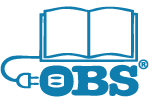We recently spoke to a potential distributor for a series of paper and e-books we are publishing. He said that if we supply printer-ready PDFs and give his company exclusive global rights to distribute our book, they would “push it out” (sounds like sausage!) to 48 leading e-tailers and e-wholesalers, most of whom will take a 50% discount off the top (the retail price of $50). On top of that, the distributor takes 12.5%.
On further discussion, we discovered that the touted up-front cost of $0 may indeed ascend, if we as publishers insist on “tweaking” the display formats of our books, trying to maintain the look and feel of real typeset pages and our branding. That would cost extra, from pennies to dollars per page per display output, depending on typographic complexity. (This is a problem working “backwards” from PDF instead of starting with XML-tagged files…) Then if we ask the distributor to also market the books (listings in their catalogs, displays at shows, mailings, etc.), they would charge an additional 21% of our net sales.
OK, so where does this leave us? Without figuring in any conversion fees, here’s a first cut on the math for a global e-book sales and distribution arrangement:
- List price for paper publication: $50
- Distributor recommends offering e-book at 1/3 off list price: $33
- – 50% discount to e-wholesaler leaves $16.50
- – 12.5% to distributor leaves $14.44
- – 21% to distributor for sales and marketing leaves $11.41 to publisher; of that, $1.14 goes to our author, who earns 10% on publisher’s net.
That is, assuming that publisher’s net is indeed the $11.41. If not, the author might earn under $1 per e-book copy sold on a book whose paper version lists for $50.
Although this is a hypothetical example based on real figures quoted to me yesterday, still, it is interesting what a small piece of pie the creator and publisher end up with in this new global e-quation, with the middlemen and software vendors eating up such a large piece of the pie relative to their value contribution. In the Internet’s distributed environment, where every client machine is also a server, it may not be necessary for us to maintain the supply chain roles of yesterday’s terrestrial publishing business. In response, we see some authors and publishers selling direct to consumers and businesses, setting their own prices, “touching” their customers directly and thus playing a bigger role developing content in the marketplace, rather than simply ceding content to large upstream aggregators, wholesalers, and distributors for what could turn out to be pennies on the dollar for their content. In weighing whether or not to play by today’s rules, it’s important to consider the tradeoffs of gaining access to the global, Amazon-dominated marketplace, at discounts like those outlined above, or proceeding along a more independent path.
